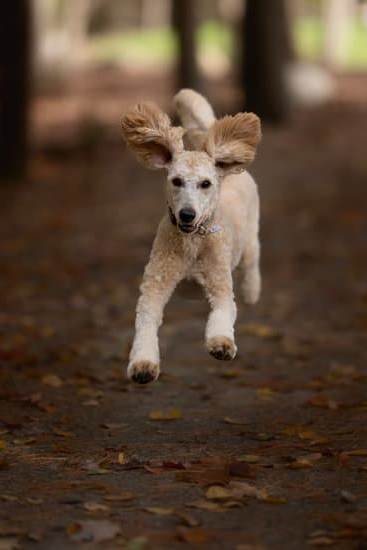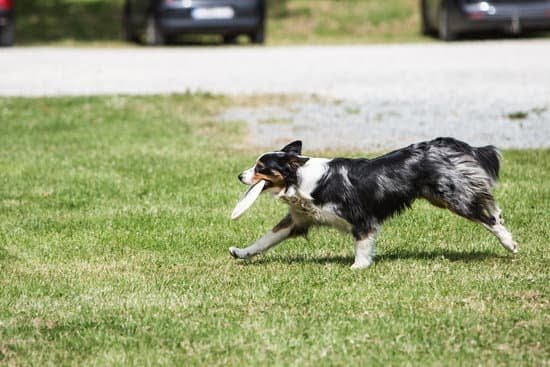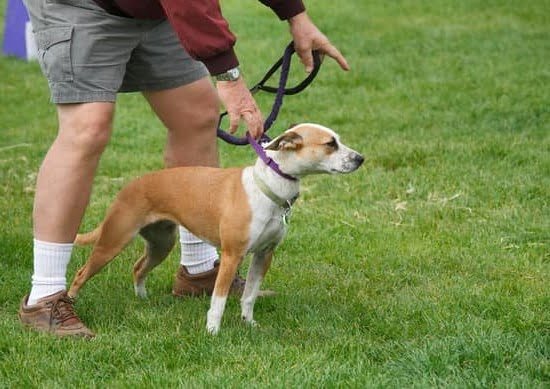How To Train Dog Not To Bark At Doorbell
Dogs are intelligent animals and can be easily trained to do a number of things. One of the most common behaviors that dog owners want to train their dogs out of is barking at the doorbell. There are a number of ways to train your dog not to bark at the doorbell, but the best way to do so is to be consistent and patient.
One way to train your dog not to bark at the doorbell is to have someone else ring the doorbell, and when your dog barks, have them immediately give the dog a treat. This will help your dog associate good things with the sound of the doorbell. You can also train your dog by ringing the doorbell yourself and when your dog barks, immediately give them a treat.
Another way to train your dog not to bark at the doorbell is to put them in another room when the doorbell rings. Once they stop barking, you can let them out. This will help them associate the ringing of the doorbell with being in another room.
It is important to be patient when training your dog not to bark at the doorbell. It may take a while for them to learn, but with patience and consistency, they will eventually learn not to bark.
How To Clicker Train A Dog To Stop Barking
There are a few different methods that can be used to stop a dog from barking, but clicker training is one of the most successful. Clicker training is a positive reinforcement training method that uses a clicker to mark the exact moment that the desired behavior is performed. Once the dog has learned what is being asked of them, the clicker can be faded out and replaced with a verbal marker, such as “yes.”
The first step in clicker training a dog to stop barking is to determine what is causing the dog to bark. Once the cause has been identified, the behavior can be systematically addressed. For example, if the dog is barking out of excitement, a behavior such as Sit or Down can be taught to help calm the dog down. If the dog is barking for attention, a behavior such as Come or Go to your bed can be taught to redirect the dog’s attention.
Once the behavior has been identified, the next step is to start training the behavior. The dog should be taught the behavior in a quiet environment, with little to no distractions. The behavior should be broken down into small steps, and each step should be rewarded with a click and a treat. Once the dog has mastered the behavior in the quiet environment, it can be transferred to a more challenging environment, such as a room with other people and dogs.
It can take some time to train a dog to stop barking, but with patience and perseverance, it can be done. Clicker training is a safe, humane, and effective way to train a dog to stop barking, and it can be used to train a variety of other behaviors as well.
How To Train Dogs To Stop Barking
Many dog owners find themselves dealing with incessant barking from their furry friend. Dogs bark for a variety of reasons, including excitement, fear, boredom, and aggression. Luckily, there are ways to train your dog to stop barking.
The first step is to determine why your dog is barking. Once you know the root of the problem, you can start working on a solution. If your dog is barking out of excitement, you’ll need to provide him with plenty of exercise and stimulation. A tired dog is less likely to bark. If your dog is barking out of fear or anxiety, you’ll need to start by teaching him basic obedience commands and working on his socialization. If your dog is barking out of boredom, you’ll need to provide him with plenty of toys and activities to keep him occupied.
Once you’ve determined the root of the problem, you can start working on a solution. There are a number of different training methods that can be used to stop a dog from barking, including positive reinforcement, negative reinforcement, and punishment.
Positive reinforcement is the most common training method and involves rewarding your dog for good behavior. This can be done with treats, praise, or petting. Negative reinforcement involves punishing your dog for bad behavior. This can be done by using an unpleasant noise or by pushing him away when he barks. Punishment should only be used as a last resort, as it can often lead to aggression and other behavior problems.
There are a number of different methods that can be used to stop a dog from barking, but the best method is usually the one that works best for the individual dog and his owner. If one method doesn’t work, try another. With patience and persistence, you can train your dog to stop barking.
Dog Barking Crate Training
There are a variety of reasons why a dog might bark incessantly when left alone in a crate. The good news is that usually, with some basic training, this behavior can be corrected.
One common reason for incessant barking is that the dog is anxious or fearful about being left alone. This can be due to a number of factors, such as a lack of socialization or exposure to other people and animals, or a traumatic experience such as being abandoned or rehomed.
In some cases, the dog may have been improperly crate-trained, and has learned that the only way to get out of the crate is to bark. This can be corrected through a combination of positive reinforcement and management techniques.
If you suspect that your dog is anxious or fearful about being left alone, it’s important to get them help from a qualified behavior professional. In the meantime, you can try some basic management techniques to help keep your dog calm and quiet when crated.
First, make sure that your dog has plenty of positive associations with the crate. Feed them their meals inside the crate, and give them treats and toys to play with in there. Make sure the crate is comfortable and spacious, and that your dog has access to plenty of water.
When you’re not home, try to keep the crate in a quiet, low-traffic area of the house. If your dog is still barking when left alone, you can try using a noise machine or a CD of calming animal noises to help soothe them.
If you’re still having trouble getting your dog to stop barking in the crate, it’s best to consult with a behavior professional for help. With some basic training and management techniques, most dogs can be taught to calmly and quietly relax in their crate when left alone.
How To Train Dog Not To Bark When Home Alone
When you are gone, your dog barks to let you know that he or she is alone. This is a natural behavior, but it can be frustrating for you and your neighbors. Training your dog not to bark when you are gone is a relatively easy process that will require consistency and patience.
The first step is to determine why your dog is barking. Some dogs bark when they are anxious or bored, while others bark to alert their owners of possible danger. Once you have determined the reason for the barking, you can begin to address the behavior.
If your dog is barking out of anxiety or fear, you will need to provide him or her with plenty of exercise and stimulation. A tired dog is less likely to bark out of boredom or fear. You can also try leaving a radio or television on to provide some noise and stimulation.
If your dog is barking out of boredom, you will need to provide him or her with plenty of exercise and stimulation. A tired dog is less likely to bark out of boredom. You can also try leaving a radio or television on to provide some noise and stimulation.
If your dog is barking to alert you of possible danger, you will need to continue to practice basic obedience commands such as “stay” and “come.” In addition, you will need to begin to socialize your dog with other people and animals. A well-socialized dog is less likely to bark out of fear or anxiety.
The key to successfully training your dog not to bark when you are gone is to be consistent. You will need to reinforce the desired behavior each and every time you leave your dog alone. Be patient and never punish your dog for barking. Punishing your dog will only make him or her more anxious and likely to bark in the future.

Welcome to the blog! I am a professional dog trainer and have been working with dogs for many years. In this blog, I will be discussing various topics related to dog training, including tips, tricks, and advice. I hope you find this information helpful and informative. Thanks for reading!





